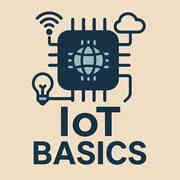Professional Courses
Industry-relevant training in Business, Technology, and Design
Categories
Interactive Games
Fun games to boost memory, math, typing, and English skills
Typing
Memory
Math
English Adventures
Knowledge

IoT (Internet of Things) Basic
The "IoT (Internet of Things) Basic" course is designed to introduce students and enthusiasts to the world of connected devices and smart systems. This beginner-friendly course provides a comprehensive overview of IoT concepts, architecture, communication models, hardware components, and real-world applications. The course emphasizes a theoretical foundation supported by practical examples, offering a solid base for learners to understand the scope and potential of IoT technologies. By the end of this course, students will be equipped with the necessary knowledge to begin exploring IoT-based projects or to pursue further advanced IoT and embedded systems studies.
Course Chapters
Chapter 1: Introduction to IoT
The chapter introduces the Internet of Things (IoT) as a network of physical devices embedded with technology to connect and exchange data. It outlines the historical evolution of IoT, its defining characteristics, and its vast scope across various sectors. The discussion includes the benefits IoT brings, such as automation and real-time monitoring, alongside challenges related to security, interoperability, and infrastructure. Future trends suggest exciting advancements in AI integration, 5G networks, and sustainable practices.
Chapter 2: IoT Architecture and Building Blocks
The chapter discusses the architecture of the Internet of Things (IoT), focusing on its layered structure comprising the Perception Layer, Network Layer, and Application Layer. It highlights the key technologies that enable IoT, such as sensors, microcontrollers, and cloud computing. Additionally, the chapter explores the IoT ecosystem, detailing the components and popular platforms that facilitate the development and deployment of IoT solutions.
Chapter 3: Sensors, Actuators, and Embedded Systems
The chapter details the critical hardware components required for building Internet of Things (IoT) systems, focusing on sensors, actuators, and embedded systems. It elucidates the functionality and applications of various types of sensors and actuators, while also providing insight into microcontrollers and embedded boards that facilitate these components' integration. Furthermore, the chapter emphasizes the importance of interfacing techniques and communication methods involved in IoT applications.
Chapter 4: Communication Technologies in IoT
Communication technologies are crucial in enabling the Internet of Things (IoT) by facilitating efficient data exchange between devices, sensors, and users. This chapter delves into the types of communication methods, such as wired and wireless technologies, as well as various protocols that cater to the unique requirements of IoT systems. Key components like gateways and edge devices are also discussed, highlighting their roles in enhancing connectivity and the overall efficiency of IoT architectures.
Chapter 5: Data Handling and Cloud Integration
Handling data efficiently is vital for successful IoT deployments. The chapter covers data collection, processing, transmission, and the role of cloud platforms in managing IoT data. It also discusses edge and fog computing, highlighting their benefits in reducing latency and improving the overall responsiveness of IoT systems.
Chapter 6: Security and Privacy in IoT
The chapter discusses the increasing security and privacy risks associated with the proliferation of IoT devices. It examines common threats, vulnerabilities, and the importance of employing encryption and authentication strategies to safeguard data. Additionally, it highlights privacy concerns stemming from continuous data collection and offers best practices for data protection. Ultimately, a multifaceted approach is essential to ensure the security and trustworthiness of IoT systems.
Chapter 7: IoT Applications and Case Studies
The Internet of Things (IoT) is impacting various sectors by enhancing the way individuals interact with technology and their environments. Key applications include smart homes, healthcare improvements through wearables, industrial automation, agricultural resource optimization, and smart urban infrastructure. The chapter emphasizes the significance of IoT in driving efficiency and improving quality of life through real-time data collection and automation.
Chapter 8: Future of IoT and Career Opportunities
The Internet of Things (IoT) is rapidly evolving, driven by advancements such as AIoT, 5G connectivity, and digital twins. These innovations are not only enhancing efficiency in industries but also creating numerous career opportunities. IoT plays a crucial role in promoting sustainable development, with applications in energy management, water conservation, and smart agriculture. Professionals in the field can significantly impact sustainability efforts while exploring various pathways for career development.
